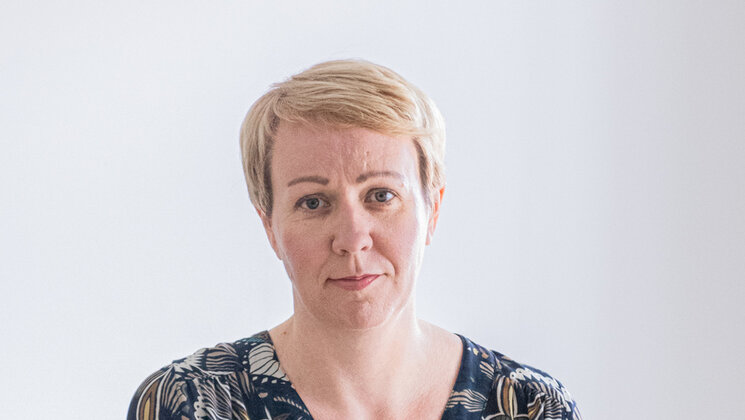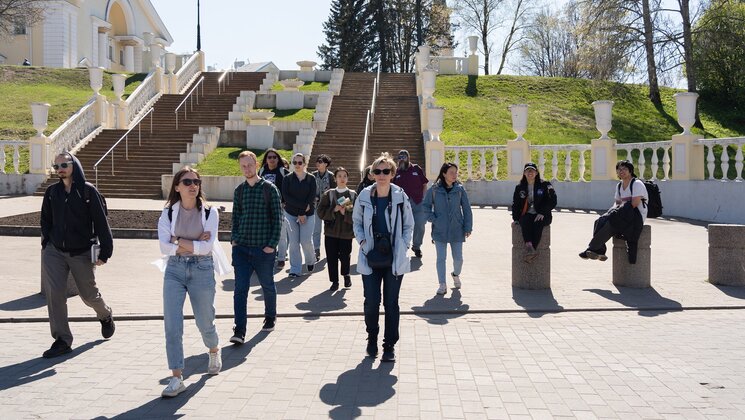A Week in the Land of the Rising Sun: Rodion's Story About Japan
Tuesday, November 5th. It’s 05:00, and my journey to my dream of seeing Japan, the land of the rising sun, with my own eyes begins.
After a long 15-hour flight and 13 hours of transit, I found myself in Tokyo the next day at Haneda Airport. After a quick check of all my documents and making my way out of the security area, I spotted the sign that read “MIRAI.” That’s when it hit me - my exciting week-long adventure in Tokyo was officially starting!
Exactly six months ago, I applied to participate in the “MIRAI” program, which the Japanese government carries out. Its goal is to strengthen the foundations of future relations between Japan and other countries by inviting future leaders to be their countries' delegates. After several stages of selection, interviews and application, I received a letter one morning: I was chosen! Among more than 2,000 applications worldwide, I and 80 other participants were invited to represent our countries. To say that I was happy is to say nothing!
Day one
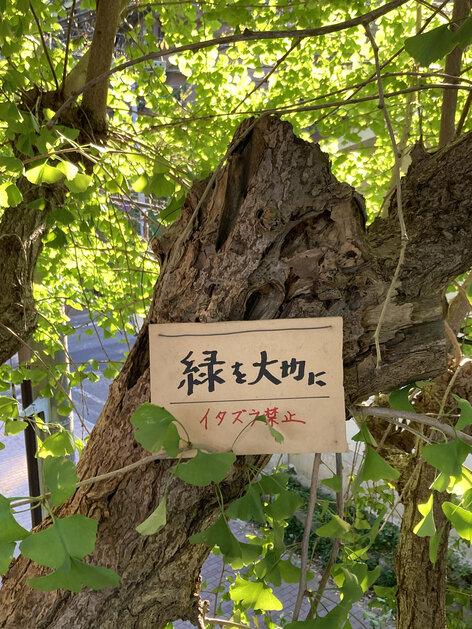
After meeting all the participants, especially the guys from my group, we went straight from the airport to lunch – straight to the prestigious Ginza district. A traditional Japanese restaurant awaited us, where we enjoyed tempura, tofu, miso soup, mochi and, of course, rice. After a delicious lunch, the next item on the program was the orientation, where we were told what was to come in the coming days and the last details were clarified. An hour later, we were already at the conference centre, where the program's organisers officially welcomed us, we met the supervisors, received badges and began to discuss further plans. I decided to take on the role of the leader of our group, with a little more responsibility: I had to make sure that everything went smoothly and help other participants. But I was incredibly lucky – my group turned out to be very friendly and pleasant, and working and spending time with these people was an absolute pleasure!
After the orientation, we went to dinner. As for the food, we were fed great throughout the project: every 2-3 hours, in some of the most expensive and prestigious establishments, which I was pleased about. After dinner, we finally headed to the hotel to relieve the burden of fatigue and freshen up after a two-day flight. As expected, the hotel was premium class, located in an area built on an artificial island. My roommate was a participant from Finland, with whom I had a lot in common, and we quickly found a common language. The first culture shock in Japan for me, of course, was the toilet. I would never have thought I would be sitting with instructions in my hands, trying to figure out how to use them. Looking ahead, I sincerely miss these toilets - this is the peak of comfort. This is where our first day of the program ended: we were placed in rooms and given free time until 11 pm, which we, of course, took advantage of by exploring the area around the hotel. Even then, I noticed how clean the streets of Tokyo are and how safe it is to walk along them at night. I wouldn't say it's any different in Estonia, but the level of Tokyo, especially for a metropolis, is definitely impressive. We were surrounded by Konbini (mini-markets), ramen restaurants, vending machines - everything you can imagine and dream about.
Day two
The second day started at 5 am, as did all the following ones. The average amount of sleep during the entire trip was 2-3 hours, which is quite logical - I personally did not come to Japan to sleep but to enjoy every opportunity. On this day, according to the plan, we visited Hitotsubashi University, one of Japan's most prestigious business schools, and Kunitachi 1st Junior High School to spend time with students and get to know the Japanese education system better.
A two-hour bus ride - and here we are already at Hitotsubashi University, where we were warmly greeted by students and professor TAKEUCHI Kan, who spent the whole day with us. It all started with a short lecture on the Japanese economy: its historical aspects and future. Then, we had the opportunity to play a game based on the prisoner's dilemma. Here, a noticeable difference in the interpretation of the game and its results arose. I remember very well how, in my undergraduate economics program, we also played this game, but then the results were completely different. In the Japanese context, the emphasis is on teamwork, where the overall team result is the priority, not the individual result. This emphasises the need to give up selfishness for the common good, which goes against the concepts of Adam Smith and what we were taught in Estonia.
The professor noted that this approach is fundamental when solving global problems, such as achieving peace, combating climate change, or helping those in need. I was amazed that such an interpretation of economic processes takes place. I agree with this idea: I have never, and may my former professors forgive me, accepted the concept of selfishness in economics. Playing the prisoner's dilemma with this approach turned out to be exciting and very educational.

After lunch at the University cafeteria (which we don’t have in Estonia…), we went to Kunitachi 1st Junior High School, which was a 15-20 minute walk from the campus. As we walked, I got a good look at a typical Tokyo residential area, and it was just beautiful! It was so cosy that I was ready to stay there forever. As soon as we approached the school, before we even had time to go through its gates, all the building windows instantly opened, and children leaned out of them, shouting at us that they loved us and shouting out all the phrases they knew in English. At that moment I realised: that this will going to be fun.
As soon as we arrived at the school, chaos ensued because “foreigners” visited it. I felt like a celebrity, walking through the corridors full of children. They swarmed us from all sides, shouting and trying to maintain at least some kind of contact. We moved from class to class, and even during lessons, we were allowed to observe the learning process itself. The most surprising thing for me was that phones are often banned in Japanese schools, which I think is a big plus - the children there are lively, enthusiastic and focused.
The most touching moment was visiting the last class - a class for special children. We were greeted with posters with inscriptions in our languages and images of our flags as soon as we entered. It was so cute that I was ready to stay with them for the whole day. We played Fruit Basket together, which allowed us to get to know each student better. It was incredible because the children could communicate with us totally in English! We had a great time playing games, answering their questions and letting them get to know us better. It was a day full of kindness and genuine emotions.
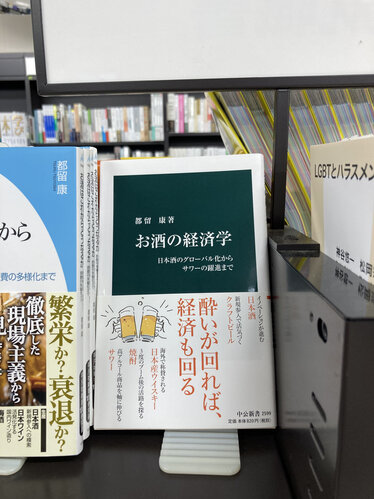
After that, we went back to campus to finish the official program for the day. Along the way, we stopped at various stores on campus and the library, where I saw many interesting books. At this point, I felt that not knowing Japanese was hindering me. For example, I found a book about economics through the prism of alcohol consumption, which looks very interesting to me as an Estonian. As soon as we finished with this, we went on to walk around the city and then to dinner. After dinner, we returned to the centre, namely to Shinjuku, where we were given free time until 11 o'clock. Shinjuku is an area where life literally boils and does not stop for a second. I just got lost among the endless lights, trying to catch every detail around me. At such moments, you begin to understand how much more there is to see in this life! People were everywhere, and here, my Estonian introversion began to make itself felt. We tried to visit everything we could, squeezing the maximum out of the remaining time. But it was quickly coming to an end, and the time came to return to the hotel on our own, using the largest metro in the world. Shinjuku Station is a challenge in itself: finding your platform among the many levels was not so easy. Thanks to Google Maps, which literally saved us in such moments. As soon as we got on the last train to the hotel, we could officially consider the day over.
Day three
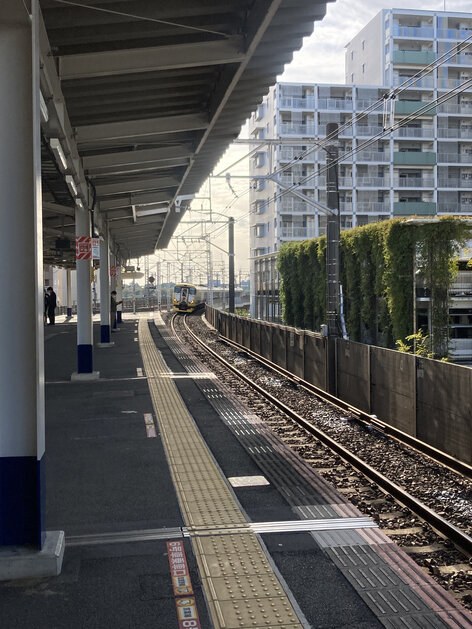
The journey continues, and the next stop is the Tokyo Stock Exchange. With a cup of Argentine coffee, after checking our things at the entrance, we were already inside the exchange, where we had the opportunity to explore every corner and listen attentively to the guide's stories about the history of the exchange and the country's modern systems. It was exciting to learn that in Japan, green means a decrease in value compared to the previous closing price, and red, on the contrary, implies growth, which is different from Western markets, where everything is the other way around. Do you also know what became the basis for developing the Japanese stock market? The answer is rice!
After a quick lunch in the Ginza area, where several robots brought us food, we went to Tokyo Innovation Base - an incubator for startups, an analogue of which can be compared to StartUp Lab. There, we studied the ecosystem of Japanese startups in detail and learned about their current problems and strengths. We had several lectures and seminars, accompanied by lively discussions, where we could ask all the questions that interested us. For example, when comparing startups in Estonia and Japan, it became clear that in Estonia, projects are focused on solving global problems and finding solutions applicable to the whole world. In Japan, startups focus on local issues, rarely going beyond their country's borders. And guess what one of the most successful startups in recent times is connected with? Yes, rice again!
The day ended in the Akihabara and Shinjuku districts – places where it is easy to get lost for hours. Shops, slot machines, manga, pop culture – all this is captivating and does not let go. Here, what may be considered taboo in our country is perceived as the norm, which is incredible. I have never felt so free and liberated without fearing being judged for my hobbies.
Day four
If we hadn’t touched on the topic of Japanese nature on this trip, it would hardly have been a success. So, on the fourth day, Mount Fuji itself was waiting for us. The three-hour bus ride to leave Tokyo seemed terrific to me. No matter how long you travel, the city never ends and continues. After a long road, the first stop was Oshino-Hakkai World Heritage Park in Yamanashi Prefecture. This is a place where you can truly feel what Japan is proud of. Deep ponds at least eight meters deep with colourful koi carp swimming are breathtaking sights. Mount Fuji majestically towered over this village, giving the landscape a special magic.

After the park, we headed to the Mount Fuji World Heritage Center in Yamanashi Prefecture to learn more about the history of Fuji and the pilgrims who have strived to conquer its peak over the centuries. There, I got myself a new cap with the inscription "Fuji" - the perfect souvenir! After this trip out of town we returned to Tokyo, where dinner awaited us at a sumo restaurant. Did you know that there was a popular sumo wrestler from Estonia in Japan? Kaido Höhevelson, or Baruto Kaito - a real national treasure.
After dinner, we had some free time again and decided to spend it on the onsen. That evening, I apparently broke all possible records for breaking social norms - from the need to sit in complete silence to the correct use of tools in the onsen. But fortunately, the Japanese turned out to be incredibly friendly: they were always ready to help and explain everything, even without asking. They notice when foreigners are confused and immediately come to the rescue. After a rest, we continued to walk around the city, looking into different establishments and trying all possible sweets.
Day five
One of the days, we dedicated entirely to Japan's traditional culture. We went to the Tokyo National Museum in the morning and spent half a day exploring every corner. Although the museum was mainly dedicated to Japanese culture, its exhibition also included artefacts from other cultures, such as Egyptian mummies, which was a surprise for me. During the visit, we also had the unique opportunity to get acquainted with the art of the traditional Japanese tea ceremony. Our teacher was a master whose family had passed this skill down from generation to generation. We enjoyed matcha tea paired with a traditional wagashi dessert - a moment I remember for its sophistication and harmony.

We spent the afternoon in Asakusa: the Torii gate, Senso-ji Temple, traditional ryokans and old houses - all this creates a unique atmosphere where you feel like you are in the centre of Japanese history. I even decided to find out my fate; unfortunately, it was not the most favourable. According to tradition, the prediction had to be tied to a unique stand to "let go" of bad luck. There were some funny situations: one of the group members decided to buy himself a kimono as a souvenir, which he did successfully. But during lunch, when he asked the supervisors if they liked his new outfit, they burst out laughing - it turned out he had bought a woman's kimono.
I finished the day in Shibuya again, where I managed to see that every Sunday evening, when there are so many people on the streets, getting through the crowd becomes a real challenge. Something is happening on every corner: music, laughter, lively conversations, and establishments keep their doors open, inviting you in. To my surprise, passing by one bar, I noticed Estonian beer there - not just one kind, but several at once! How it ended up there remains to be seen.
Day six
Here comes the final day of the project, everything flew by so quickly that I didn’t even realise how it was time to say goodbye. The program for this day was not too busy, but it turned out to be the most important one in the whole project. But before the cherry on the cake, we visited Nakagawa Masashichi Shoten in the morning. This unique enterprise strives to show a different Japan, combining the best from every corner of the country in one place. Here you can see amazing products and buy something as a souvenir. The company's owner gave us a lecture on how important it is to appreciate your culture and work on its preservation and development. Finally, my final purchase was whiskey from the Japanese island of Okinawa — a symbolic gift that reminded me of the uniqueness of this trip.
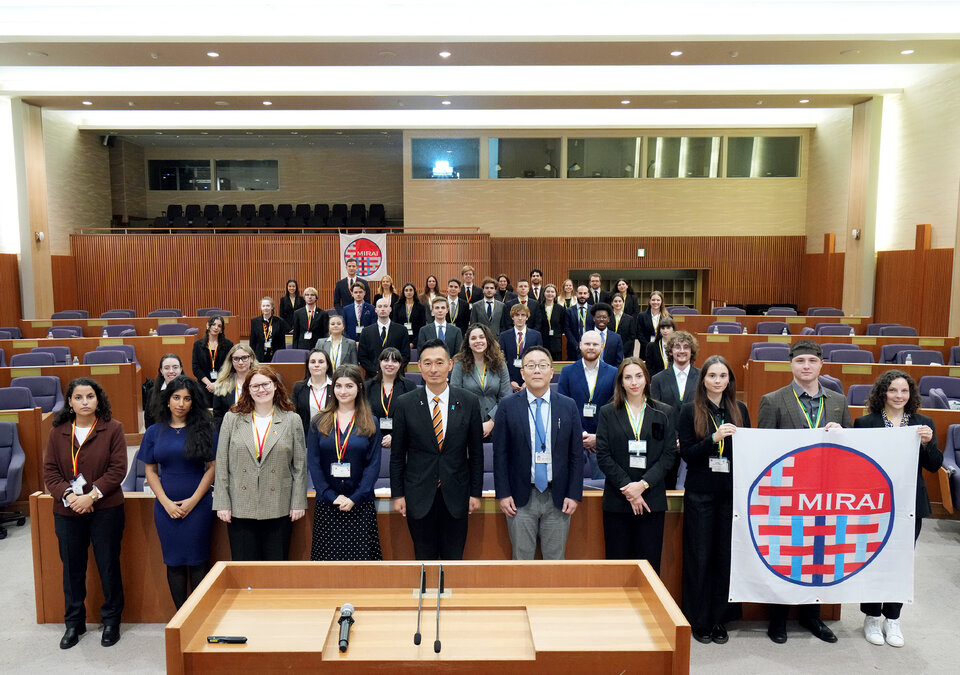
And so, after everything we have been through, we stand in front of the Japanese Ministry of Foreign Affairs. Why are we there? To present our report to the higher-ups, we will discuss what we have learned during the project and how we plan to use the experience gained. Everything was going well – report after report, questions after answers, new connections were made, and new opportunities opened up. But the most unexpected moment came when the Vice Minister of Foreign Affairs entered the conference room. None of us expected it. His sincere desire to get to know us and learn our opinions and plans for the future was truly impressive. Despite all the strictness of the Japanese hierarchy, he talked to us as equals, which stunned me. This may seem incredible to those familiar with the peculiarities of the Japanese society. Although we represented our countries as delegates, I did not even imagine my role was so important that I could talk on equal terms with someone of such a level. However, everything went wonderfully. And so the official program came to an end.
Day seven
6:30 AM - Haneda airport, I'm waiting for my flight back to Estonia.



